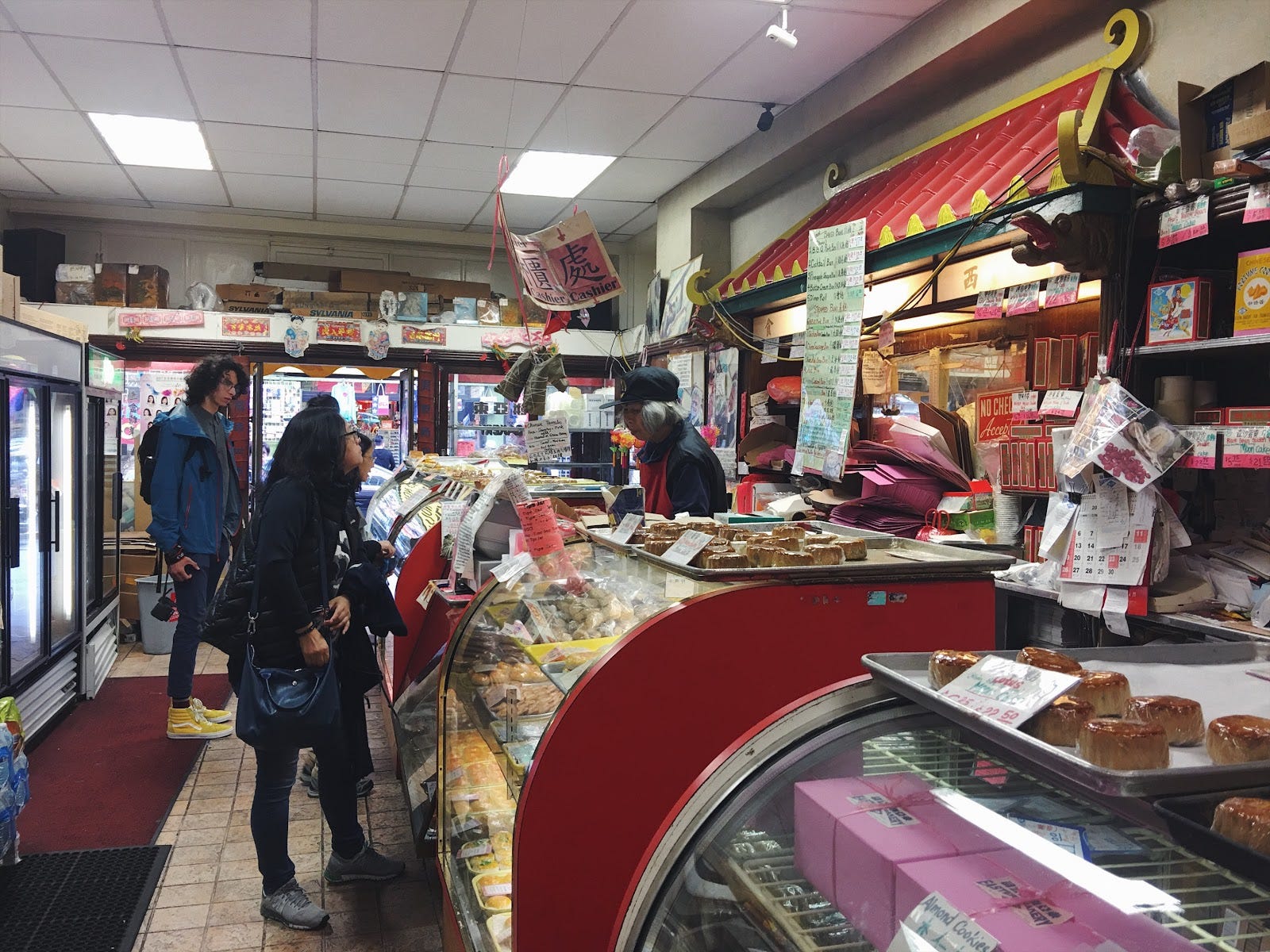
When I first saw Eastern Bakery’s huge neon sign, perched at the intersection of Grant and Commercial, it reminded me more of an old American diner sign than that of a Chinese pastry shop. I later discovered this was because Li Chiu Fan first opened Eastern’s doors in 1924, when diner culture was the American standard. Today, Eastern Bakery holds the title of the oldest bakery in Chinatown. A plastered paper sign that reads, “We Were Here Before the Great Depression, the Bay Bridges, World War II…” hangs behind the counter. The neon sign reads, “CHINESE and AMERICAN FOOD,” a constant reminder of the bakery’s diner beginnings. “A lot of things [in this city] have been changing, but we are one of the few bakeries that are still around,” said Orlando Kuan, current owner of Eastern. “We have people who come in and say, ‘Without you it’s not San Francisco anymore! Thank God you’re still here.’”
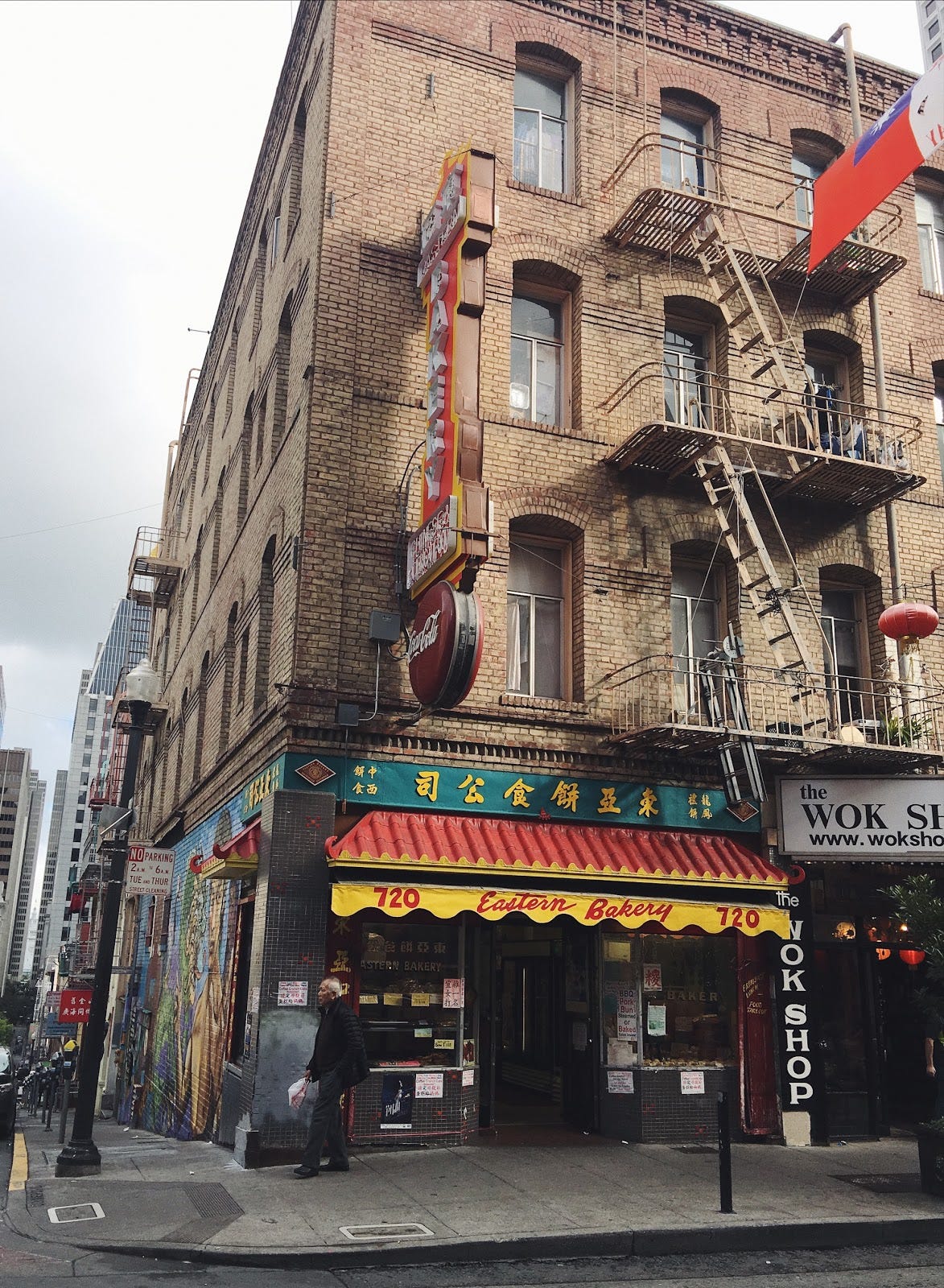
San Franciscan native Michael Chung grew up with Eastern as his neighborhood bakery in the ’70s and remembers it fondly as a popular after-school spot. “For ABC’s [American-born Chinese] in the neighborhood, eating Eastern’s food was a treat,” Chung said. “The local bakeries mostly served traditional Chinese pastries, [while Eastern] served both Chinese and American food, like burgers and plate lunches, as well as having a soda-fountain area behind their counter.”
Like Eastern Bakery, I also carry a history of adapting to my surroundings. Being Chinese in my hometown of Jakarta, Indonesia—or cindo, as we kids like to call it — is a complex identity to navigate: my Chinese surname, lim, is hidden within my official Indonesian surname of Salim. I grew up with a seventh-generation cindo mother who spoke Dutch and Javanese in the house rather than Mandarin, but still celebrated sincia (Chinese New Year) religiously with my third-generation cindo father’s family. And so I, alongside other Chinatown residents, come to Eastern Bakery to find familiar flavors.
In 1985, Kuan and his family bought the bakery from its original owner and have been managing it ever since. Eastern no longer serves American diner food, but when I visited, I still saw American pastries that regulars, like Michael Chung, grew up eating — Eastern’s “butterflies” (otherwise known as palmiers), lemon tarts and apple turnovers — displayed alongside traditional Chinese pastries, such pineapple buns and sesame-seed balls, in the glass cases of the bakery. It certainly made me wonder whether the bakery’s ability to survive for so long is partly due to its willingness to adapt and Americanize — not unlike my own efforts to find a sense of belonging in this country.
I grew up with a seventh-generation cindo mother who spoke Dutch and Javanese in the house rather than Mandarin, but still celebrated sincia (Chinese New Year) religiously with my third-generation cindo father’s family. And so I, alongside other Chinatown residents, come to Eastern Bakery to find familiar flavors.
Take one of Eastern’s most popular offerings: the coffee crunch cake. This sweet sponge cake, lathered with rich mocha cream and tasty coffee crumbles, is not a traditional Chinese cake by any means. In fact, the cake stems from Blum’s, an SF pastry institution that closed in the ’70s. A sign plastered on the bakery’s window invites customers to go on a trip down memory lane with this classic delicacy — “Order Your Mother’s Day Cake for Your Mom Here! Coffee Crunch Cake, Remember?” What’s funny is that the coffee crunch cake actually reminds me of my mother’s favorite cake—mocha taart, a Dutch sponge cake lathered with sweet mocha buttercream and infused with rum, from her hometown bakery in Bandung, Indonesia.
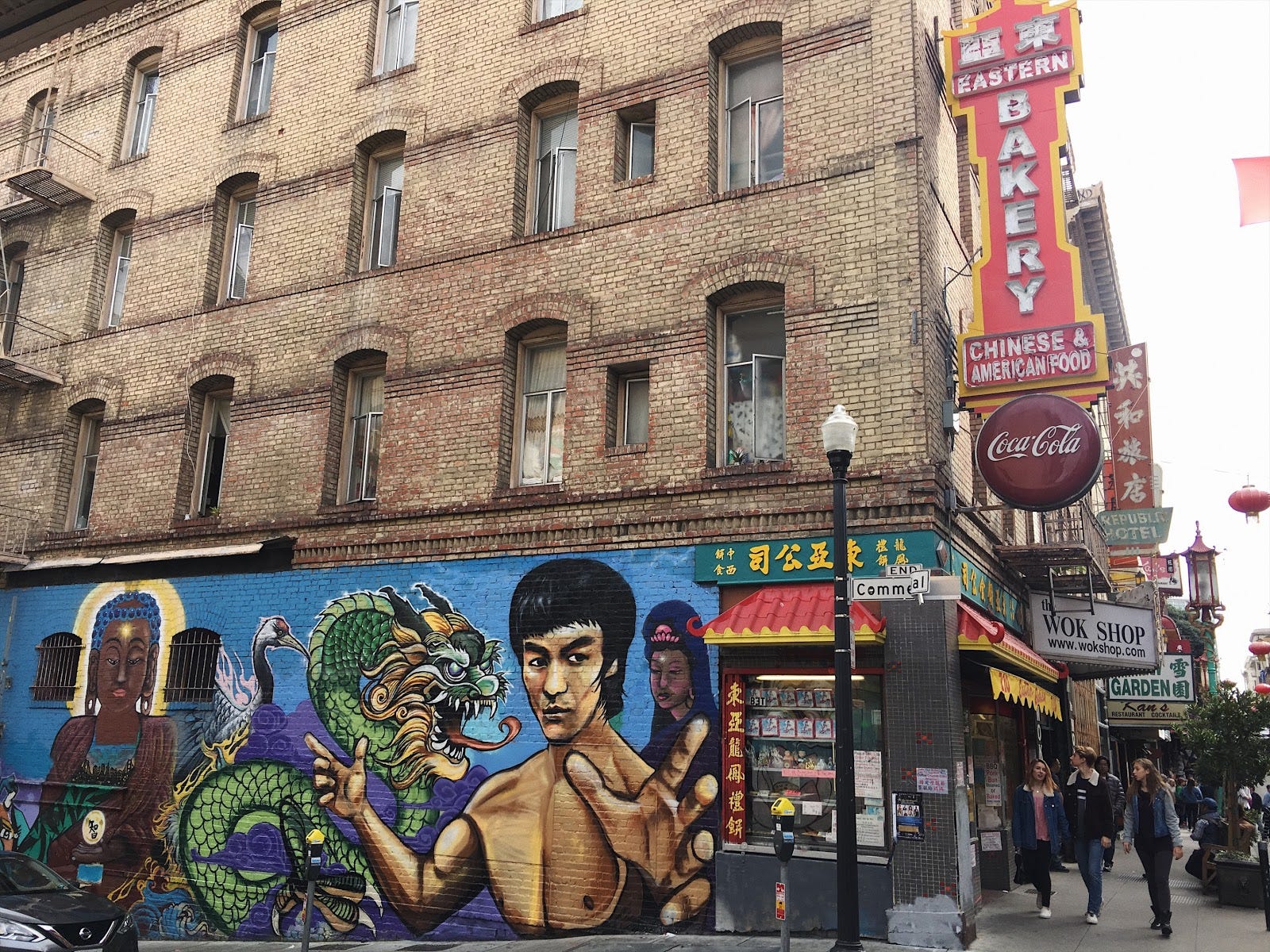
When he was a child, Rick Shiu, a longtime patron of the bakery, loved eating the coffee crunch cake. “Eastern Bakery’s coffee crunch cake was always the highlight of every birthday, even [if it was] not your own,” he said. “Whenever there was a celebration, we’d hope to be fortunate enough to have that cake. I’ve not encountered a cake as delicious as theirs.” Shiu, who moved to Los Angeles after 30 years of living in the Bay Area, would order a full coffee crunch cake every time he was back to visit family. “I’d take back a whole 12-inch cake — in part to share with others here, but also to get my fix and fill of the flavor,” he said.
In my eight years of living in the States — which, of course, meant being constantly homesick — Chinatown has evolved into a personal refuge for some notion of cultural familiarity.
Kuan believes his dedication to following the original recipes is what produces the high quality and authenticity of his pastries. “In order to do something right, you just have to do it right,” Kuan said matter-of-factly. “For example, a lot of people may know the coffee crunch cake recipe but don’t want to make it themselves because it’s so hard.” Shiu definitely agrees with Kuan in this regard, saying that Eastern’s coffee crunch cake is “truly unique,” one that is “often imitated” yet “never duplicated.”
In my eight years of living in the States — which, of course, meant being constantly homesick — Chinatown has evolved into a personal refuge for some notion of cultural familiarity. I’ve learned to explore the nooks and corners to find a hidden gem or two: like a bag of 50 frozen dumplings for just 10 dollars or a warm dan tat (egg tart) right out of the oven. By discovering these small mementos of my Chinese upbringing, I unexpectedly came to experience a kind of kinship with an American city I otherwise would not feel like I belonged in. Amid all the changes during the last decade in San Francisco, that is what Eastern, the oldest bakery in Chinatown, has provided for residents of the Bay Area: a sense of familiarity, the comfort of knowing that not everything has changed.
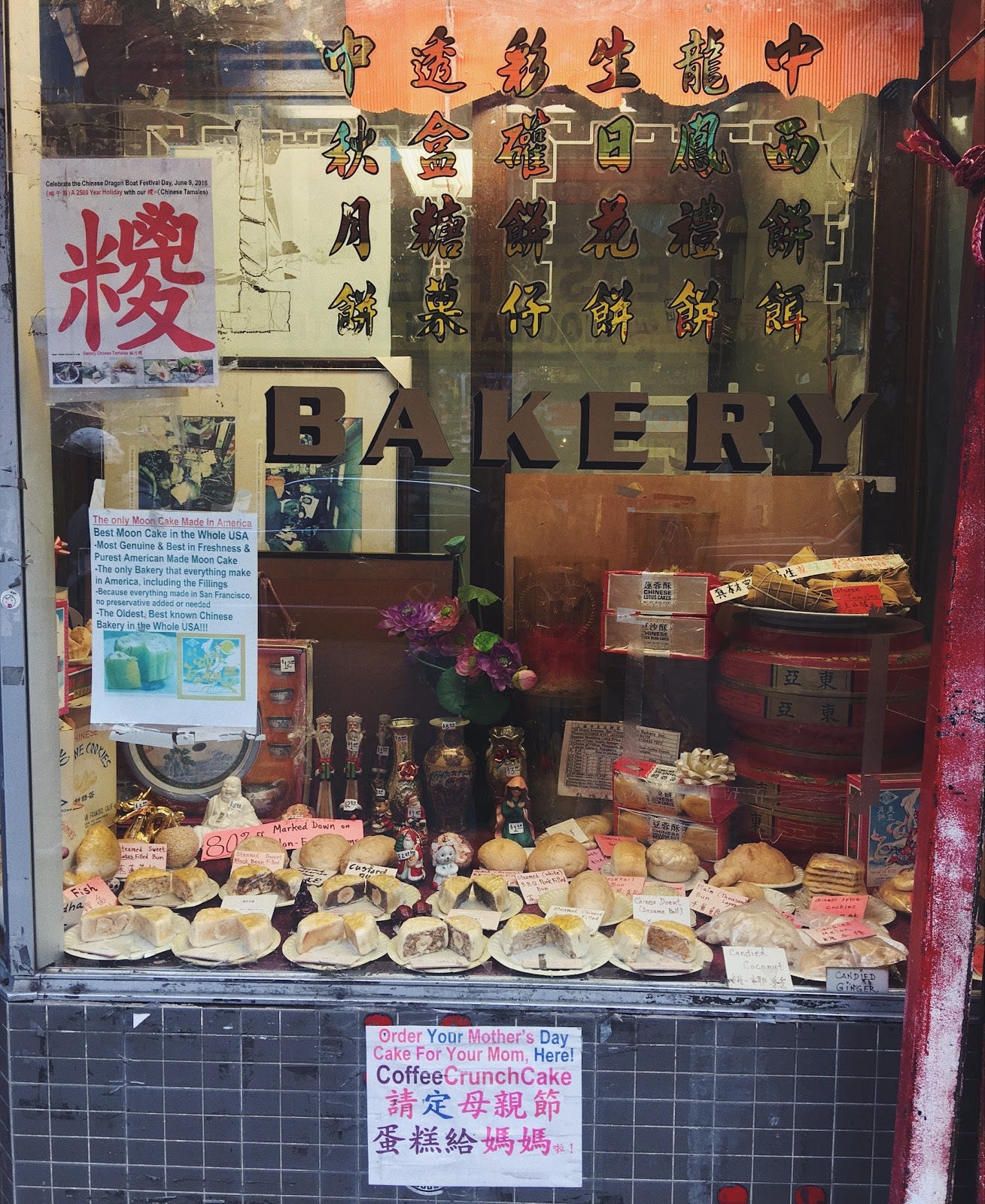
Eastern Bakery provides Chinese residents in the Bay Area with a taste of home. Mastering traditional Chinese recipes is no easy feat. Kuan is especially proud that Eastern’s mooncakes are made in-house — the paste alone for the lotus mooncake takes eight hours to make. A sign that reads, “The Only Moon Cake Made in America,” hangs over the bakery’s treasured display of mooncakes alongside a collection of Buddha and Santa figurines. “Eastern didn’t have any contact with China during World War II, so we had to make it here,” Kuan said. “Other bakeries sell mooncakes with a lot of preservatives and chemicals since it takes at least 19 days to ship. Ours are freshly made and tastes so good; people love them.”
One of Eastern’s fans also includes Bill Clinton, who stopped by Eastern for a surprise visit back in 1995. Kuan remembered being flustered that day, having gotten the word that the president was coming only an hour prior. “[Clinton] got the lotus mooncake and insisted on paying, even though we told him not to,” Kuan said. “I kept the bill, which he signed, and framed it at home. He’s a very funny, nice guy.” Photographs of Clinton’s visit are plastered on the walls, complete with the written details of the day. The caption reads, “It was just like a short but big, exciting and memorable party!!!” This unexpected day has since become Eastern’s claim to fame — “The Only Bakery in the USA visited by President Bill Clinton for Its Mooncakes” is proudly stated on top of all their menus.
Kuan is especially proud that Eastern’s mooncakes are made in-house — the paste alone for the lotus mooncake takes eight hours to make.
Other pastries that should not be missed at Eastern include custard tarts and pineapple buns, or bo lo bauu in Cantonese. The custard tart is a derivative of the famous dan tat of Golden Gate Bakery down the street, which Kuan also manages alongside his brother, and makes for a great alternative when Golden Gate is closed. Pineapple bun, on the other hand, is a classic Chinese delicacy that does not actually include any pineapple — its name comes from its crunchy crust, which resembles the pattern of a pineapple skin. If you’re craving a savory option, the barbeque pork buns are definitely your best bet.
For a bakery that has witnessed so much history, I asked Kuan what’s in store for their future. “Time flies by so quickly here — I blink and it’s 10 years,” Kuan said. “I really like working here, though. The customers are very nice. They come in and tell me, ‘You’re still here!’” But after managing the bakery for 31 years, Kuan is starting to think of retirement and intends to find a successor who can continue the business instead of just closing up shop.
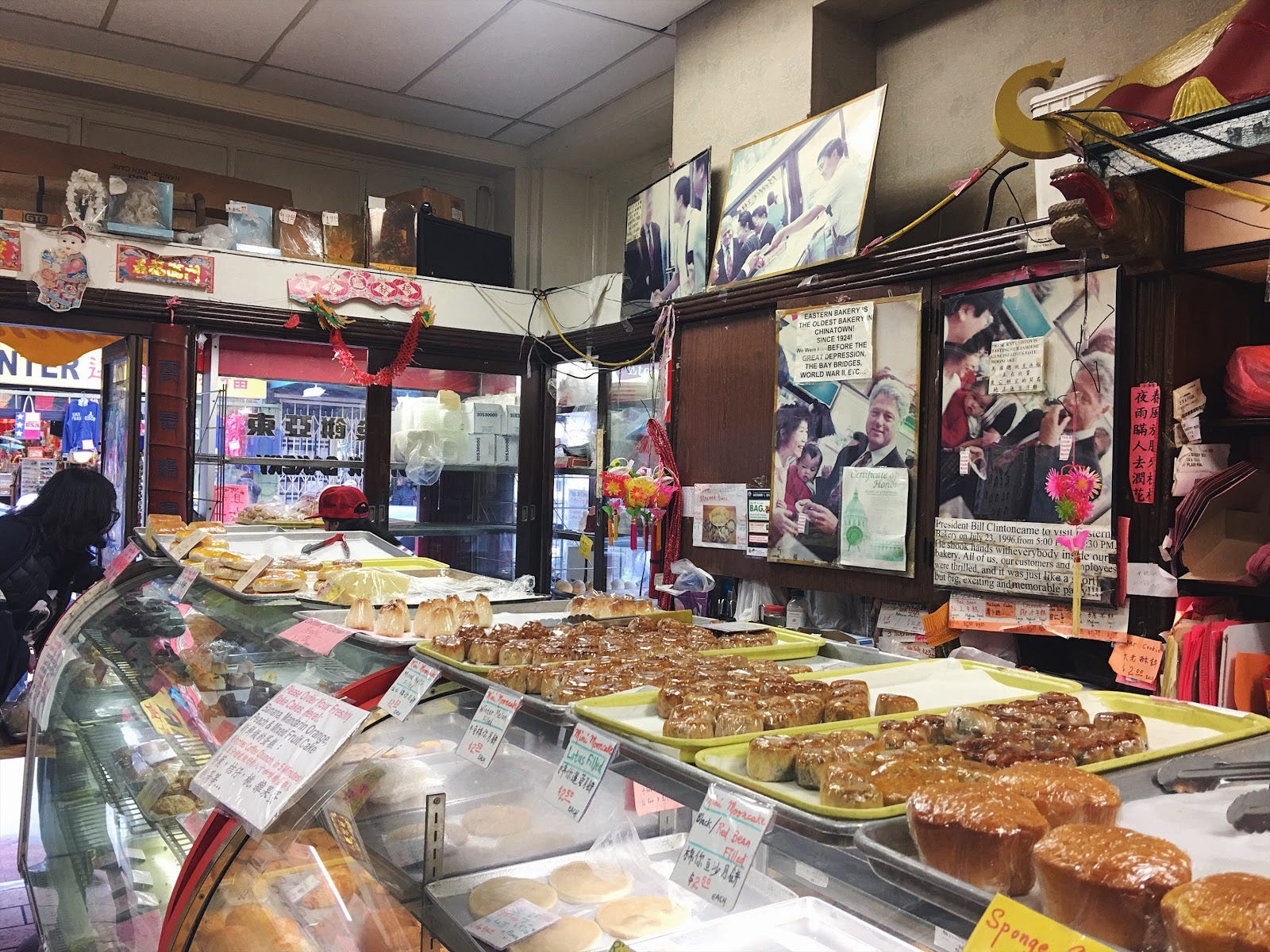
Before I leave, Kuan gives me a lotus mooncake to bring home. I didn’t grow up eating mooncakes, but it still felt strangely familiar when I took my first bite, just as it felt strangely familiar to be in Eastern. In the faces of the old women serving lo mai gai and cha siu bao to the customers, I see the face of my own nainai, who would pick me up at school, having bought similar treats at the wet market back home in Jakarta, Indonesia. Only we called them bacang and bakpao. When a long line begins to form, the women begin shouting at each other in Mandarin in an effort to coordinate their assembly line of pastry delivery and payment. I see the bewilderment in the faces of tourists who have wandered in and laugh.
In the women’s raised tones, I hear the voice of my nainai, shouting at me and my cousins all throughout my childhood. It’s a familiar sound of frustration and affection, just as the lotus mooncake is a familiar combination of flavors I grew up with — sweet lotus paste with a tasty salted-egg filing — even if it’s not exactly the same.







